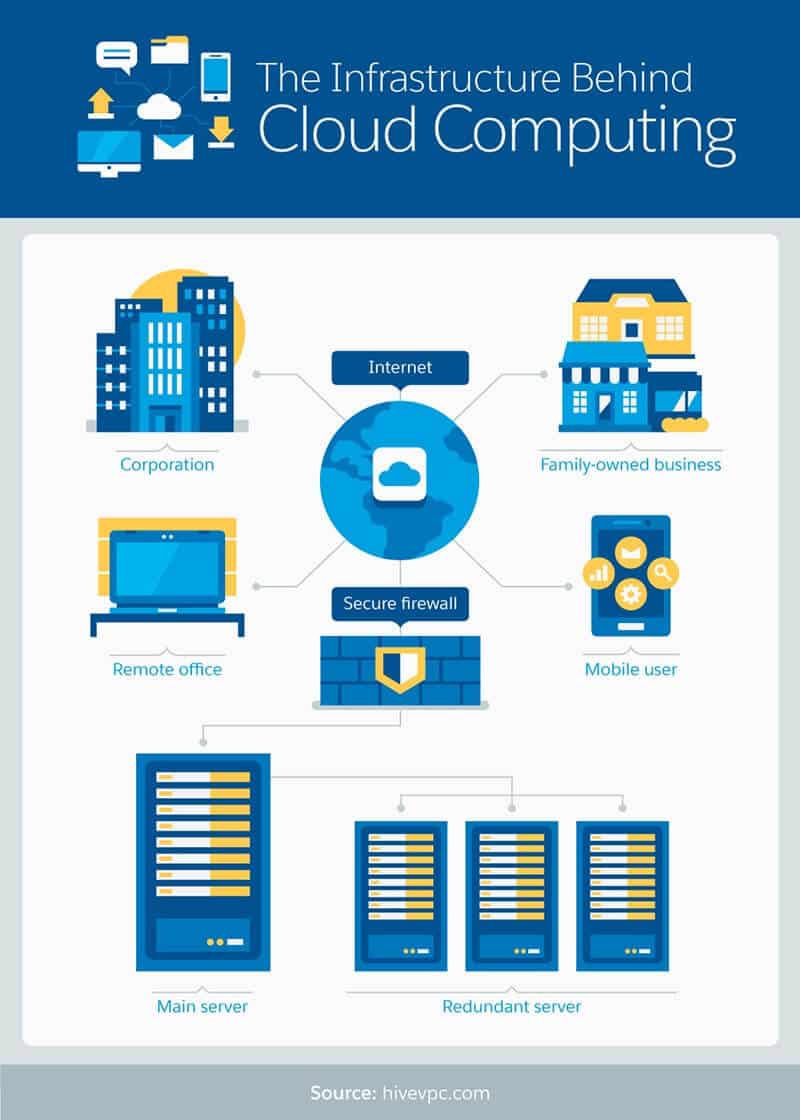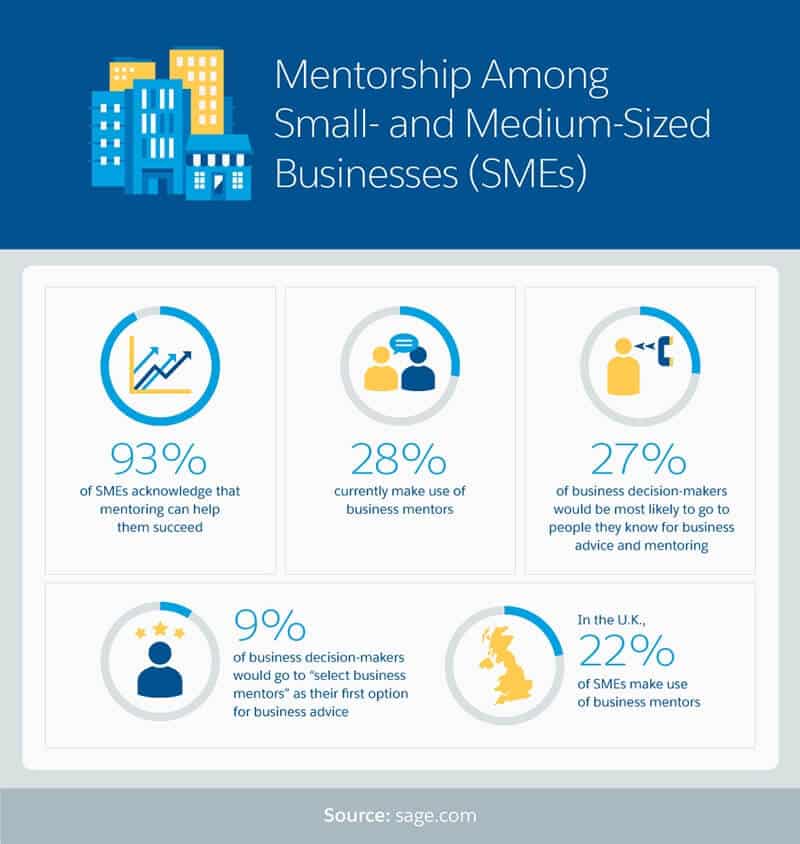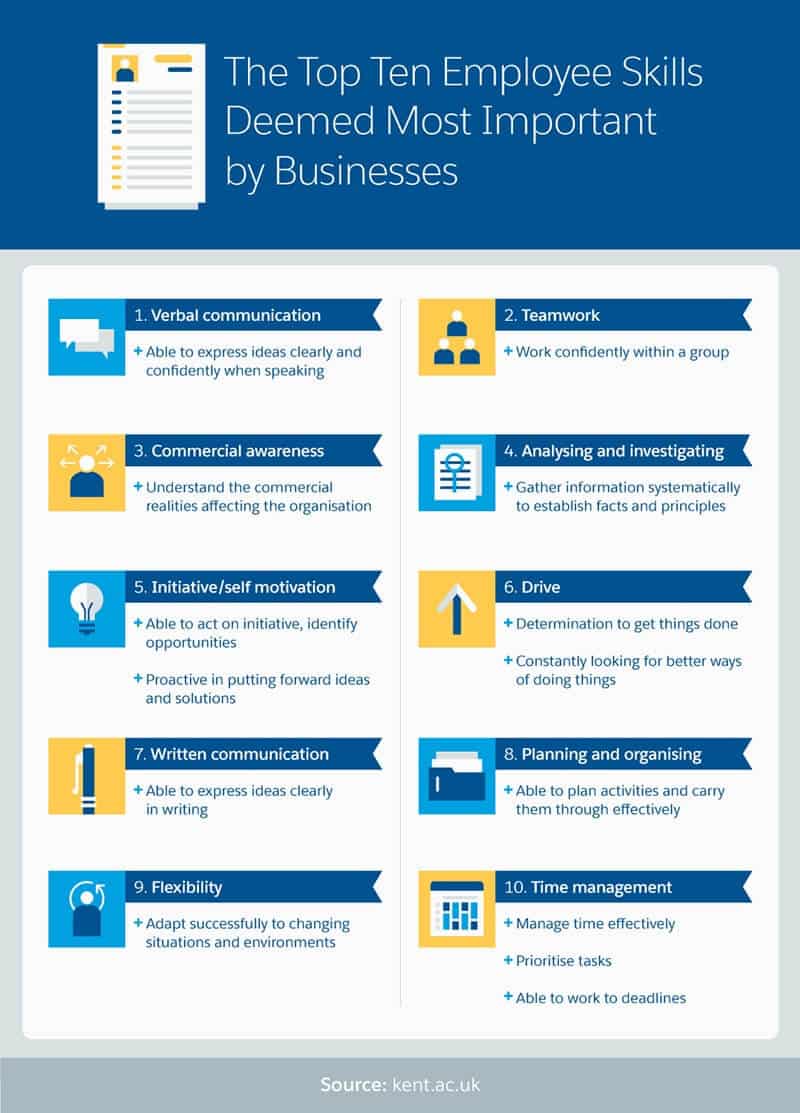There has never been an easier time to start and run a small- or medium-sized enterprise (SME). You now have access to services that were once unavailable to even the behemoths: Sophisticated management and collaboration tools are just a click away. In a business ecosystem that increasingly favours small and agile over big and lumbering, many of these cost-saving solutions take advantage of scale. This is an exciting time to be a little fish.
The real challenge in a world where anyone with a laptop can start a business isn’t access or infrastructure: It’s knowing how to make the vast knowledge and resources of the connection economy work for you. Here are eight business tips to help your SME save time and money, and leverage your size.
1. Use Cloud Computing
Computers used to take up huge rooms. Today’s slimmed-down servers still occupy valuable space, require maintenance, and become obsolete quickly. They’re never as secure as you think (more on that later), and they’re vulnerable to physical damage.
In other words, servers are a pain.
Cloud computing lets someone else worry about hardware. Not only does switching to a cloud-based server mitigate or eliminate the problems mentioned above, it also allows your team to access their work and collaborate anywhere as long as they have an internet connection. This paves the way for other savings, such as remote working arrangements and the use of contract workers and freelancers.
In the event of a business catastrophe, such as lost or destroyed computers, all your data is safely stored on remote servers and is ready for you the next time you log on. Even if a disaster takes out the cloud’s primary server, your data is still safe because these primary servers regularly back up on redundant servers at other locations. Your business — and all its data — can continue uninterrupted.
Furthermore, with cloud computing you only pay for the space you need. As your needs grow, you simply purchase more, and purchase as much as you need. Granting access to the cloud is as simple as sending an email or setting up a new account, and you can implement this change in less time than it takes to read this article.
Cloud computing eliminates the need to pay for floor space for servers, and can eliminate your SME’s need for office space altogether. The number of completely remote companies is increasing every year, and cloud computing is helping to power that revolution.
2. Focus on Online Security From the Start
The costs of a security breach can be immense in terms of time, money, and even reputation. Spend the money now to protect your SME to save time later. After all, according to SmallBusiness.co.uk, “In the early stage of business you simply can’t afford to compromise your security.”
Even so, some UK companies are operating with an attitude of “it won’t happen to me” when it comes to online security. In fact, 38% of businesses polled have no security protecting their network and email, with an additional 11% unsure of their security measures.
EldoS Corporation lists seven advantages businesses with enhanced security can enjoy:
- Valuable information is protected
- Stay ahead of your competitors
- Helps you expand into new markets, such as government contracts
- Proves you care about your clients
- Reduce development costs by integrating security upfront, and not adding it after the fact
- Increases software interoperability
- Avoid fines, lost business, and downtime by meeting current standards
With new EU regulations that still apply to companies wishing to do business on the continent, companies falling short of data protection standards will face fines of either 4% of their revenue or €20 million, whichever is higher. Act now to protect your data: Upgrade your IT security measures and use a cloud-based CRM so you never lose access to your data, and be aware of potential offline measures you need to take so your business is always available for your customers.
3. Motivate Employees and Give Them Ownership of Tasks and Ideas
Distracted and checked-out workers cost the US economy $7.4 billion each day, and in the UK “one-third of employees are distracted at work for up to three hours a day, blaming their lack of concentration on chatty colleagues, social media, and even the weather.”
Encourage increased productivity and friendly competition by using metrics from your CRM. Who closed the most deals this week? Which customer service representative answered the most calls? Use your software to collect data on relevant metrics (e.g., team leaderboards) in order to reward winners.
Further motivate your employees by giving them autonomy. An article from Smallbusiness.co.uk gives the example of Evander, a business that increased employee ownership of tasks by reducing the number of employees assigned to a project from six to two. Since then, the time it takes Evander to do a job has been reduced by 50%, and complaints are down 80%.
Your employees are ready for similar autonomy and responsibility beyond what you hired them for, and the article from Smallbusiness.co.uk states that your people can handle it: “Throwing people in the deep end works. If you increase staff ownership you increase productivity. Rather than feel overwhelmed, staff rise to the challenge.”
Another way to increase autonomy is to encourage your employees, at all levels, to brainstorm and propose ideas for the company. HCL Technologies tried this and saw explosive revenue growth after implementing its “ideapreneurship” program, where “every employee gets the opportunity to ideate, and where these everyday ideas set a new business paradigm.”
You can learn more about the psychology behind motivation in a now-famous RSA animation by Dan Pink. His research shows that money is a perfectly good motivator for strictly physical tasks. If you want a ditch dug, pay someone more and they’ll dig you a better ditch. When it comes complex tasks such as sales and design, however, increased compensation does not equal increased performance. If you want your people to do meaningful work, it is essential that you help them make their work meaningful. This is the motivation strategy that companies like Google and Salesforceuse to win.
4. Offer Mentorship Opportunities
Small businesses don’t exist in a bubble: They make up 60% of the UK’s employers. That’s a huge base of knowledge and experience from which a smart leader can learn. Mentors are readily available, both inside and outside your organisation. For instance, you likely have an accountant who may be able to serve as a financial consultant.
You can also learn laterally by meeting with other SME founders and owners. The employment information organisation ACAS says that poor leadership is a major barrier to productivity. Mentorship is one of the best ways to train good leaders and to help leaders train their teams. Support is key to success.
5. Invest in Online Tools and Automate to Track Tasks
There’s an app for just about everything nowadays, and digital tools are enormously beneficial. For example, there are a number of services that help budget-conscious SMEs design professional websites. On top of getting great value on a custom website, you reap the benefits of having a good-looking, functional site, which is often a decisive factor in the customer experience.
Collaboration tools, especially your customer relationship management (CRM) platform, are indispensable for managers. These programs keep your team on the same page in and out of the office. Many of these tools come with a time management feature that gives you the accountability benefits discussed earlier. These platforms are even more effective when paired with cloud computing.
These tools are what military strategists call a force multiplier: a small element that gives you a disproportionate advantage relative to cost and risk.
6. Hire the Right Employees and Treat Them Well
Motivation is the key: You must invest in and motivate your people.
Think less about what you can get out of an employee and more about what she can get out of her time at your organisation. Offer learning opportunities. Invest in efficient communications, and make work culture a priority. The intent isn’t to make your workplace a drum circle — it’s about the bottom line. Happy employees generate more for their companies and have a lower turnover rate.
In regards to turnover, the Guardian recommends having your employees do the headhunting. This saves money and attracts people like the ones who already fit in. This is another great way to give your employees a stake in creating their own workplace.
Other HR solutions include working with freelancers on projects that don’t require full-time staff, as well as using online tools and cloud computing to allow your employees to work remotely. Letting an expat code or write copy from Bali may sound like the height of indulgence, but they may get more work done there than they would commuting to the office space you pay for.
7. Sign the Right Clients and Treat Them Well, Too
Apply the same attitude you have with finding the right employees to your clients and partners, too. Ade Potts, the managing director of Experian’s SME business, told the Telegraph, “Taking on the wrong kind of customers could have a negative effect” on your business.
Take the time to research who would most benefit from your products and services. Use the data you collect from different departments and your customer relationship management platforms (from sales to marketing to customer service) and create personas and customer archetypes. Learn who your best customers are and conduct demographic research on Facebook and other platforms. Armed with this quantitative information, you’ll know the right customers for your business.
Knowing your customers, however, is only the first step. Your relationships with your customers are possibly the most important part of your business, and these existing customers can help lead you to new business. After all, word-of-mouth advertising is among the most powerful and cost-effective methods of marketing out there.
8. Go Green
British businesses left £300 million on the table in 2013 by wasting power. Some of that money could be yours by making a few changes at work. Start with your employees’ mindset: Ask them to treat the office like their home. Turn off lights when you leave the room and turn off computer monitors when they’re not in use. Encourage reduced paper use and energy-efficient electronics.
Compact fluorescent lighting (those curlycue bulbs) and LED bulbs make a huge difference. The Telegraph recently evaluated the cost of running ten compact fluorescent bulbs, including the price tag of the bulbs themselves. The savings were £240 in the first year, with bulbs that last 13 years. BPlans claims the bulbs will cut your electric bill by a whopping 75%.
Going green is good for your brand. So is a positive work culture and progressive collaboration policies. Getting a reputation for saving time and money the right way is some of the best free marketing you’ll ever receive. If you implement these business tips, talk about them publicly on social media — your blog, in the newsletter, or on social media — to gain free marketing. Your SME needs to save time and money in order to stay successful, and these eight tips will help you get started.
Source: www.salesforce.com




